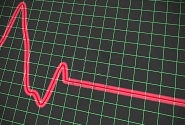Economy

ISM Reports Softer Manufacturing Demand with PMI at 51.7
Written by Sandy Williams
July 1, 2019
The ISM Manufacturing Index slipped to 51.7 percent in June from 52.1 percent in May, its lowest reading since October 2016. The headline PMI has been softening since September 2018, noted Timothy R. Fiore, chairman of the Institute for Supply Management Manufacturing Business Survey Committee.
“Softening this month was primarily due to demand and inputs — new orders, supplier deliveries and inventories,” said Fiore. “Four of the six big industries expanded (up from three the previous month), but at lower rates.”
New orders were flat at a reading of 50.0 for the month, dipping 2.7 percentage points from May. The production index gained 2.8 points for a reading of 54.1, indicating accelerating growth and reduction in backlogs. Supplier deliveries slowed again in June, but appear to be improving as indicated by an index reading of 50.7 compared to 52 percent in May. A reading below 50 indicates faster deliveries, while one above 50 indicates slower deliveries.
The inventory index contracted as production demands depleted inputs. Customer inventories were still considered too low in June, but were approaching normal levels. Prices for raw materials decreased in June for the first time since February, with lower prices for steel and aluminum noted.
Exports increased slightly in June while imports were flat.
“Respondents expressed concern about U.S.-China trade turbulence, potential Mexico trade actions and the global economy. Overall, sentiment this month is evenly mixed,” said Fiore.
Twelve of 18 manufacturing industries reported growth in June. Primary metals, transportation equipment and fabricated metal products were among those industries that contracted.
Respondent comments included:
- “Tariffs continue to adversely impact decisions and forecasting. Our increasing fear is that current trends will weaken the global economy, influencing our ability to grow in 2020 and beyond.” (Fabricated Metal Products)
- “Demand for the remainder of 2019 has softened significantly due to issues in the aerospace industry. The 2020 outlook is looking stronger. Overall, state and local economies remain strong. Recruiting for open positions still requires time to find the right candidates.” (Transportation Equipment)
- “Tariffs continue to be a challenge. We are concerned about the implementation of Mexican tariffs and the cost pressures it will have on our Latin American business.” (Petroleum & Coal Products)
- “A late planting season has caused a slowdown in our agricultural business. Seeing higher prices due to tariffs and tariff-related supply chain issues.” (Machinery)
- “Business has slowed in the last 30 to 60 days. The last 30 days have tracked 4 percent below plan, but still 6 to 8 percent above the previous year to date.” (Miscellaneous Manufacturing)
- “China tariffs and pending Mexico tariffs are wreaking havoc with supply chains and costs. The situation is crazy, driving a huge amount of work [and] costs, as well as potential supply disruptions.” (Computer & Electronic Products)
- “Tariffs are causing an increase in cost of goods, meaning U.S. consumers are paying more for products.” (Chemical Products)

Sandy Williams
Read more from Sandy WilliamsLatest in Economy

Architecture billings continue to slide in March
Architecture firms said billings continued to decline in March, according to the latest Architecture Billings Index (ABI) released by the American Institute of Architects (AIA) and Deltek.

Beige Book shows concerns about trade policy
Manufacturing was mixed, but two-thirds of districts said activity was little changed or had declined.

New York state manufacturing index drops again in April
Firms were pessimistic, with the future general business conditions index falling to its second lowest reading in the more than 20-year history of the survey

Construction adds 13,000 jobs in March
The construction sector added 13,000 jobs, seasonally adjusted, in March, but tariffs could undermine the industry.

Supply chains, end-users brace for impact from tariffs
Supply chains are working through what the tariffs mean for them
